What to do if you encounter a wolf on the trail: safety guide
Knowing what to do if you encounter a wolf will keep you – and these until-recently endangered creatures – protected and safe on wild adventures
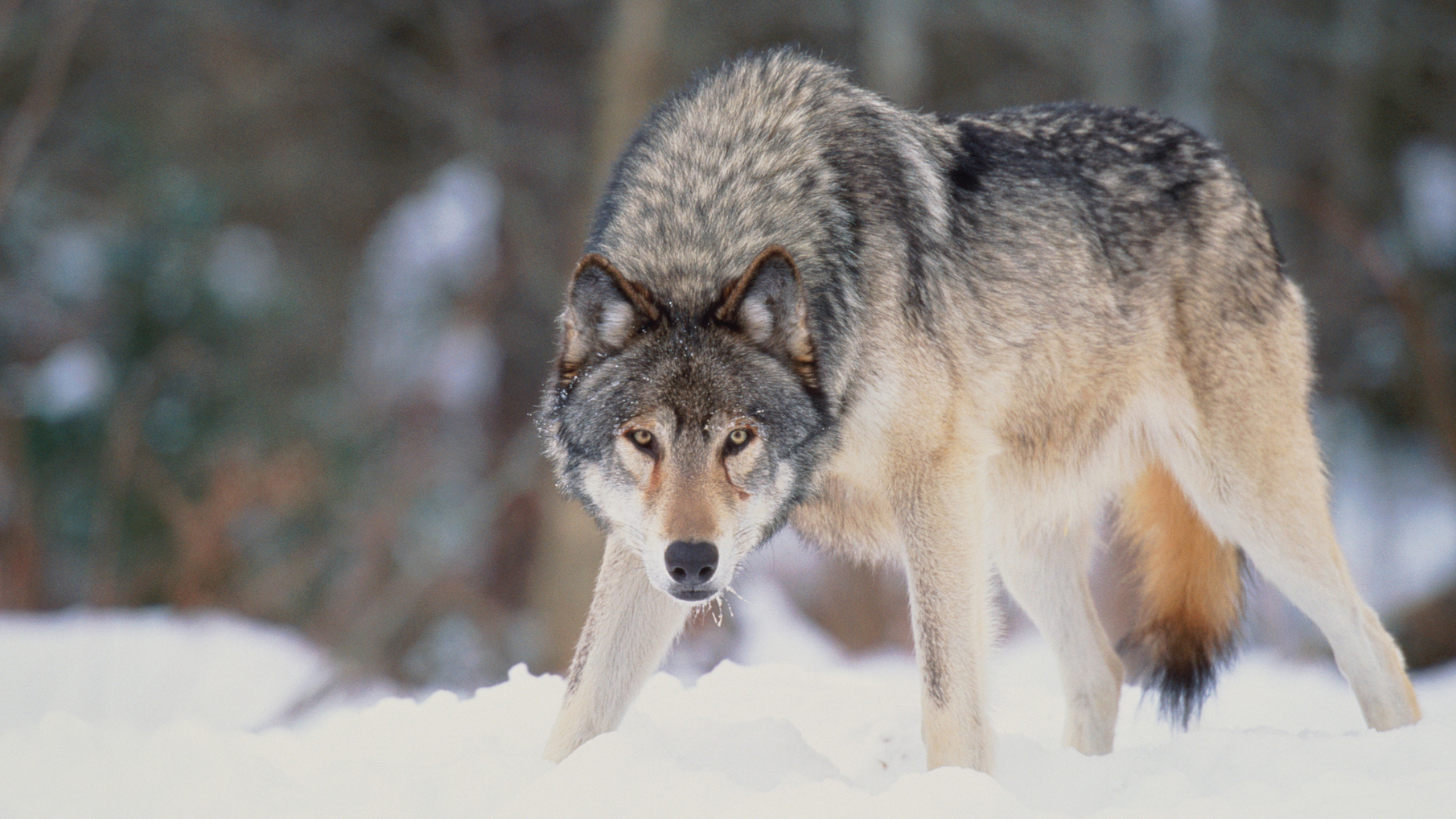
In December 2023, five endangered gray wolves were released into the wild by Colorado Parks and Wildlife in an effort to create a self-sustaining wolf population. It signalled a return to Colorado for the species for the first time since the 1940s. These kinds of rewilding efforts are taking place across the world, as the importance of protecting the planet's biodiversity is being brought into ever clearer focus by the climate crisis.
As rewilding efforts gain more public approval among those concerned about the environment, it’s possible that soon, wolves might roam in areas where you like to hunt and camp. Though wolf sightings are extremely rare, it’s helpful to know what to do if you encounter a wolf to keep yourself, and these until recently endangered creatures, protected.
Though traditionally revered in indigenous cultures, wolves have also suffered from a lot of misunderstanding amongst humans, whether they’re huffing and puffing in children’s bedtime stories or facing off against plane crash survivor Liam Neeson in remote Alaska. But are wolves really as dangerous as we’ve been led to believe? Let’s take a look at the gray wolf, and what to do if you encounter one in the wild.
Finally, if you’re planning on hiking or camping in northern or western states, you’re much more likely to encounter a bear than a wolf, so make sure you read our article on what to do if you meet a bear.
Meet the expert
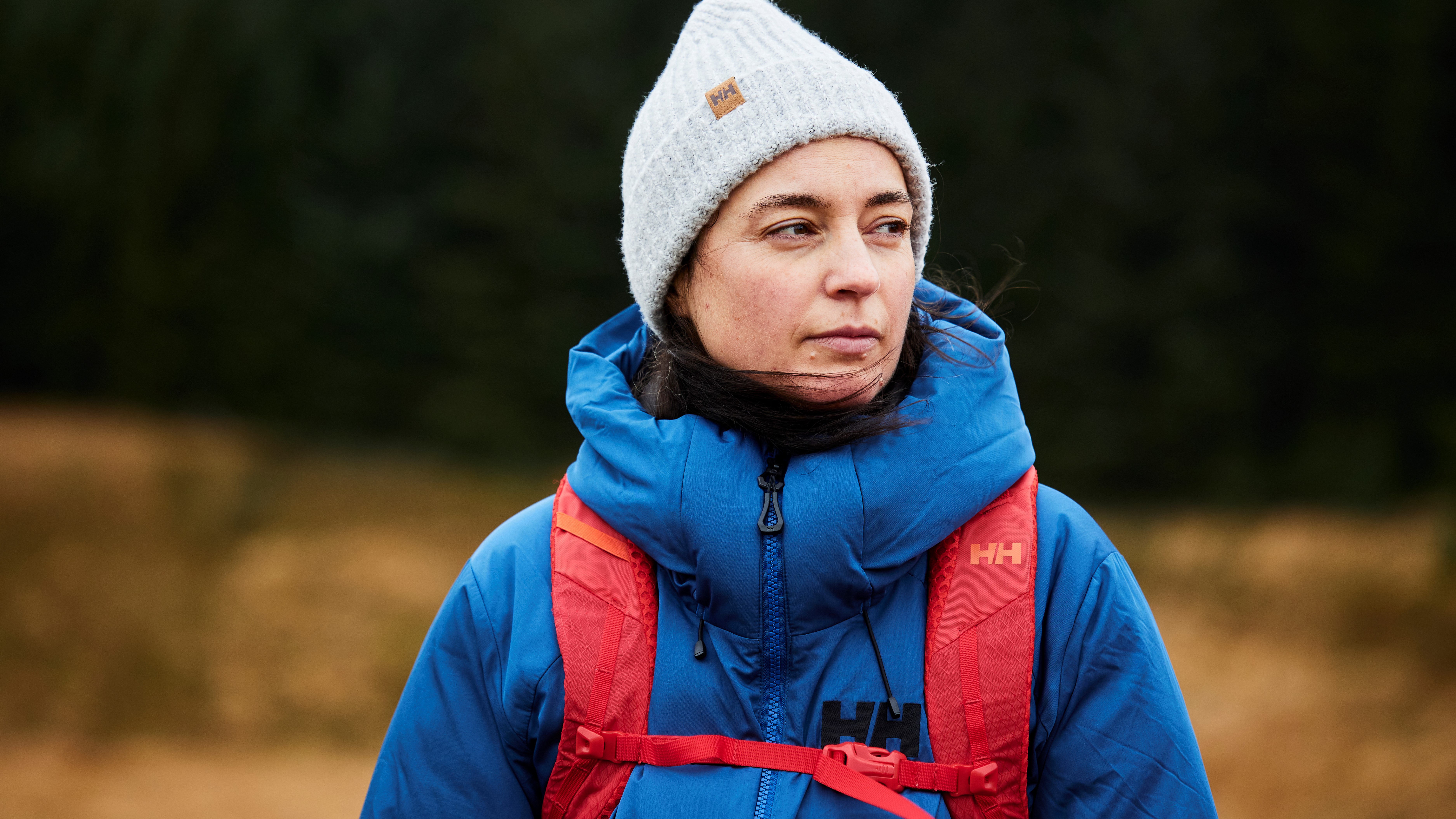
Julia moved to the US for university and developed a love for the great American outdoors. She enjoy tackling backcountry trails and bagged several Colorado 14ers while she was at it. Now back in her native Scotland, she still keeps a close eye on developments across the Pond. Maybe one day she'll share the Highlands with wolves, who once roamed Scotland's mountains, too – time will tell.
Today's best deals
The gray wolf
- The gray wolf is the largest non domesticated member of the canine family
- They were virtually eradicated from North America and Europe during the 19th and 20th centuries
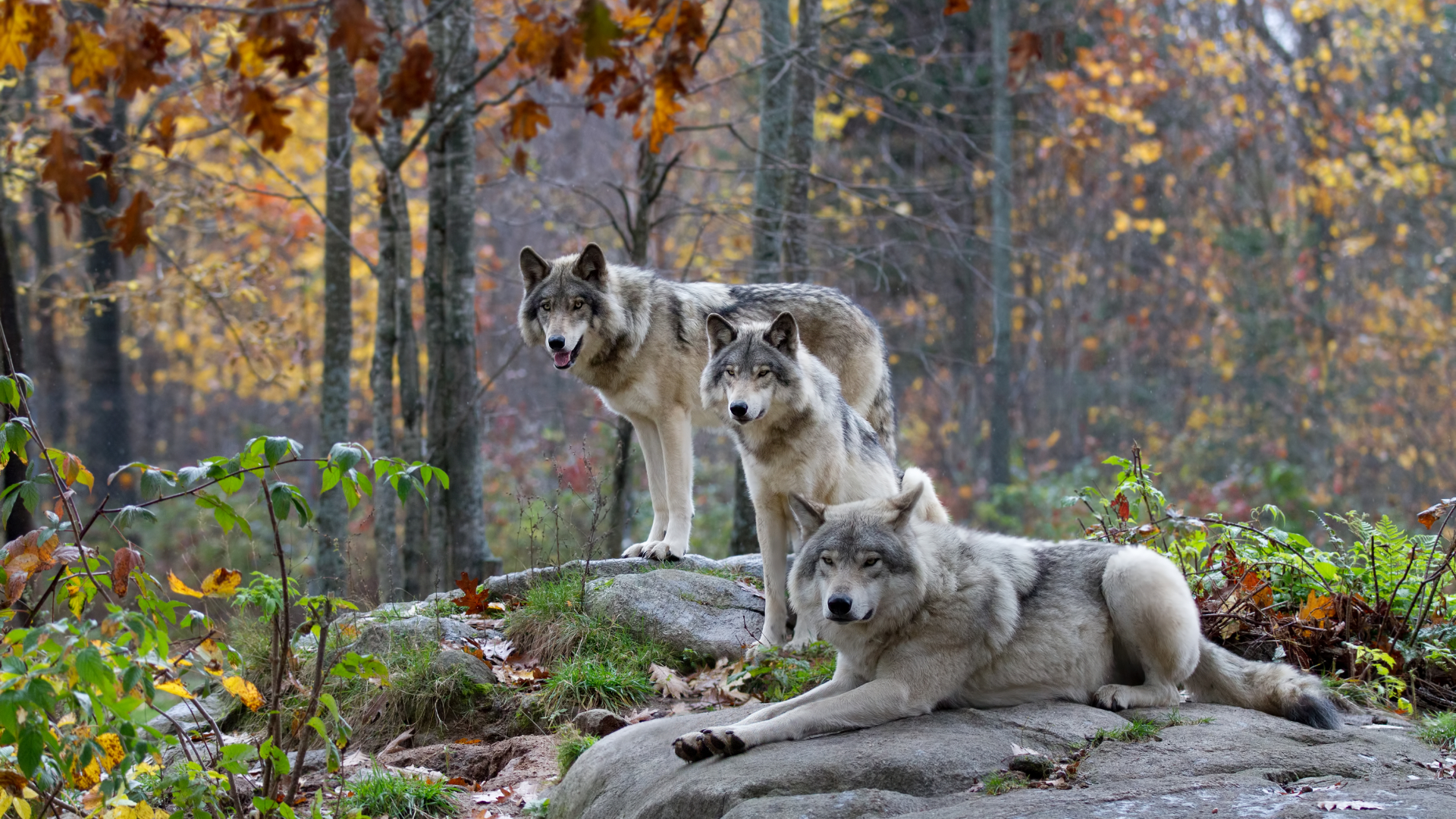
The gray wolf, also known as the timber wolf, is the largest non domesticated member of the canine family. Basically, it’s a very large wild dog.
An average sized male wolf is about 6.6ft long and stands about 30 inches tall at shoulder height, weighing 100lbs. Female wolves are slightly smaller. The largest wolves in North America are found in Canada and Alaska. Wolves typically have gray or brown fur with white fur on their underbelly and legs.
Wolves once roamed diverse habitats across North America, Europe and Asia. They are hunters and possess large canine teeth and are able to pursue their prey at speeds of up to 37mph. Wolves feed on large mammals like deer and moose as well as smaller rodents like beavers. A wolf can consume up to 20lbs of meat in a single meal, hence the phrase “wolfing it down”. They will also prey on livestock such as sheep and cattle and as a result, were virtually eradicated from North America and Europe during the 19th and 20th centuries. By 1950, Minnesota was the only place in the US where wolves remained.
All the latest inspiration, tips and guides to help you plan your next Advnture!

- Gray wolves were an endangered species and efforts to reintroduce them in America started in 1995
- There are thought to be 78,000 gray wolves in North America, mostly in Canada
Gray wolves were classified as an endangered species in 1974 and efforts to reintroduce them began in 1995 in Yellowstone National Park and Idaho. Since then, they’ve been reintroduced in other western and northern states and there are estimated to be as many as 78,000 gray wolves in North America, the majority of which are to be found in eastern Canada. There are thought to be about 18,000 in the US, most of them in Alaska.
Wolves live in organized packs, usually around 6-10 animals, consisting of an alpha male and female and their offspring. Their territory can be as large as 1200 square miles. Wolves are known to travel large distances, and do most of their movement and hunting at night. They use howling to communicate within the pack.
Will a wolf attack a human?
- Wolves are generally wary of humans and try to steer clear
- Wolf attacks are extremely rare
- There are only two deaths on record attributed to wolves in North America

Like virtually all wildlife, wolves fear humans and tend to steer clear of human interaction so attacks are very rare, to say the least. A fatal wolf attack in Alaska in 2010 was the first in the state, and only the second on record in North America. A 2002 bulletin by the Alaska Department of Fish and Game Wildlife (ADFG) found 80 wolf/human interactions in a 60 year period, only 25 of which involved unprovoked attacks by a healthy wolf. As is the case with other wildlife such as bobcats and coyotes, attacks tend to occur when wolves feel threatened, are infected with rabies, or when humans have been feeding wolves or leaving garbage out.
In short, your chances of being attacked by a wolf are far less than being attacked by a cow, a shark or a goose. In fact, your chances of ever even seeing a wolf are rare.
Will a wolf attack a dog?
- Wolves will attack dogs given the opportunity
- If you're hiking near wolves' habitats, it's best not to take your dog

There’s no other way to say it – a wolf will probably attack your dog given the opportunity. According to the ADFG, wolves do display aggressive behavior towards dogs, even when on leash, and may often even ignore humans in pursuit of a dog. If you are camping or hiking in wolf territory, you may want to consider leaving your dog at home, rare as wolf encounters may be.
What to do if you encounter a wolf
- The chances of encountering a wolf are vanishingly small
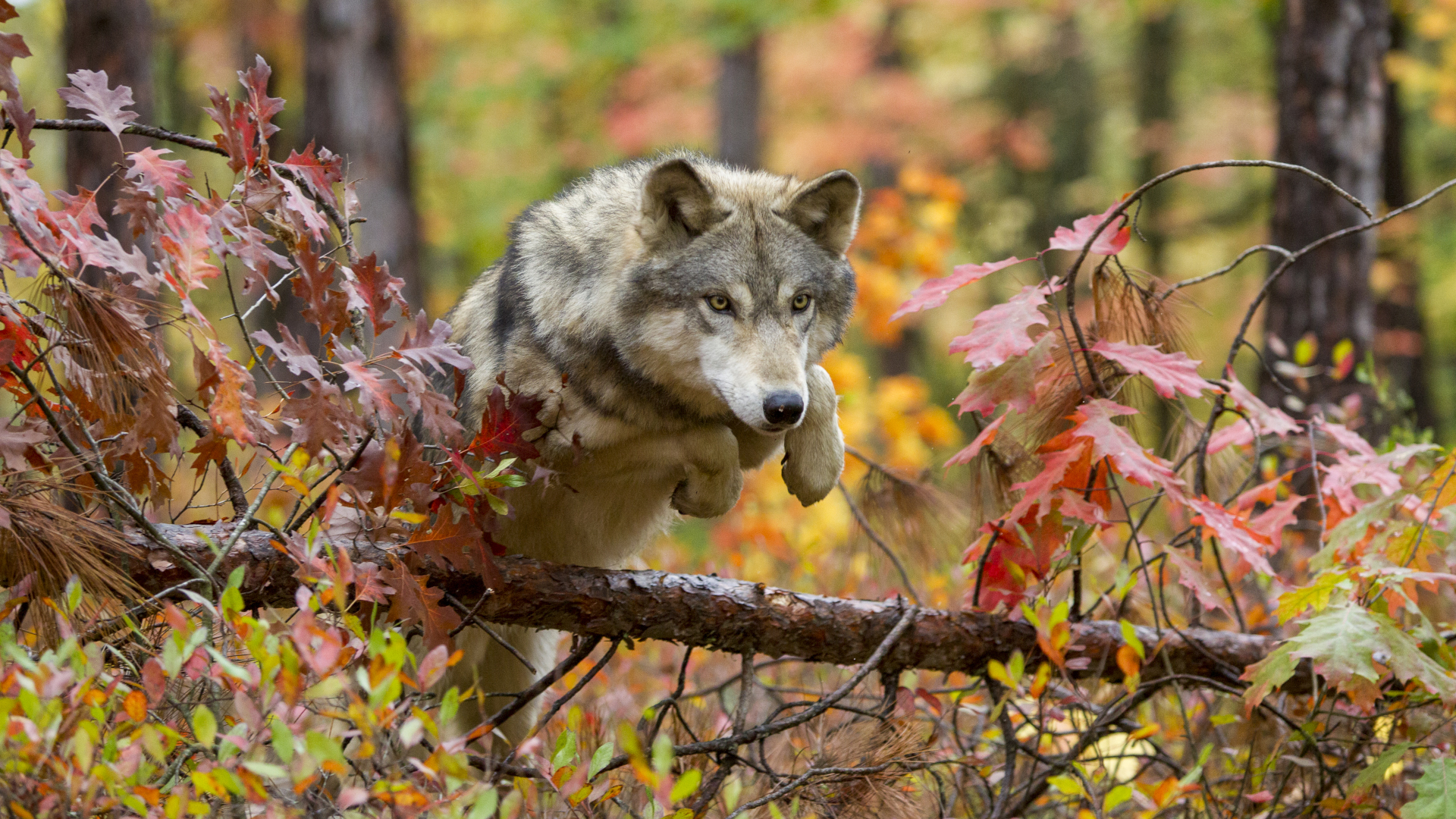
Since there are so few wolves in the wild and at most you'll find one wolf pack over an area of more than a thousand square miles, your chances of encountering one in the wild are honestly minute. In the very unlikely event that you do encounter a wolf in the wild, here are a few steps you should take to stand your ground.
1. Make yourself bigger
You may have heard this advice before for encounters with wildlife like mountain lions and it’s important to heed with wolves too. Stand up straight, even raise your arms or backpack over your head, and try to appear as big as possible.
2. Don’t run
Remember: wolves are hunters. Don’t even turn your back on the wolf, never mind running which makes you look like prey to a wolf. Wolves can run faster than you can! Keep facing the wolf and back slowly away.
3. Secure your dog
If you’re with a dog, get it on leash and keep it by your side. This won’t necessarily prevent the wolf from attacking your dog, but standing with yourself in between the wolf and the dog may help. If the wolf does attack your dog, don’t attempt to physically intervene.
4. Make noise
If the wolf does not appear to be backing down, or if it’s acting aggressively towards you, clap your hands, blow your whistle, yell and throw things at it – water bottles, stones, whatever you can reach without turning your back or making yourself more vulnerable.
What to do if a wolf attacks you
- Again, this is a very unlikely occurrence
- A rabid wolf, one that has been habituated to human contact or an alpha female protecting her pups could display aggressive behavior
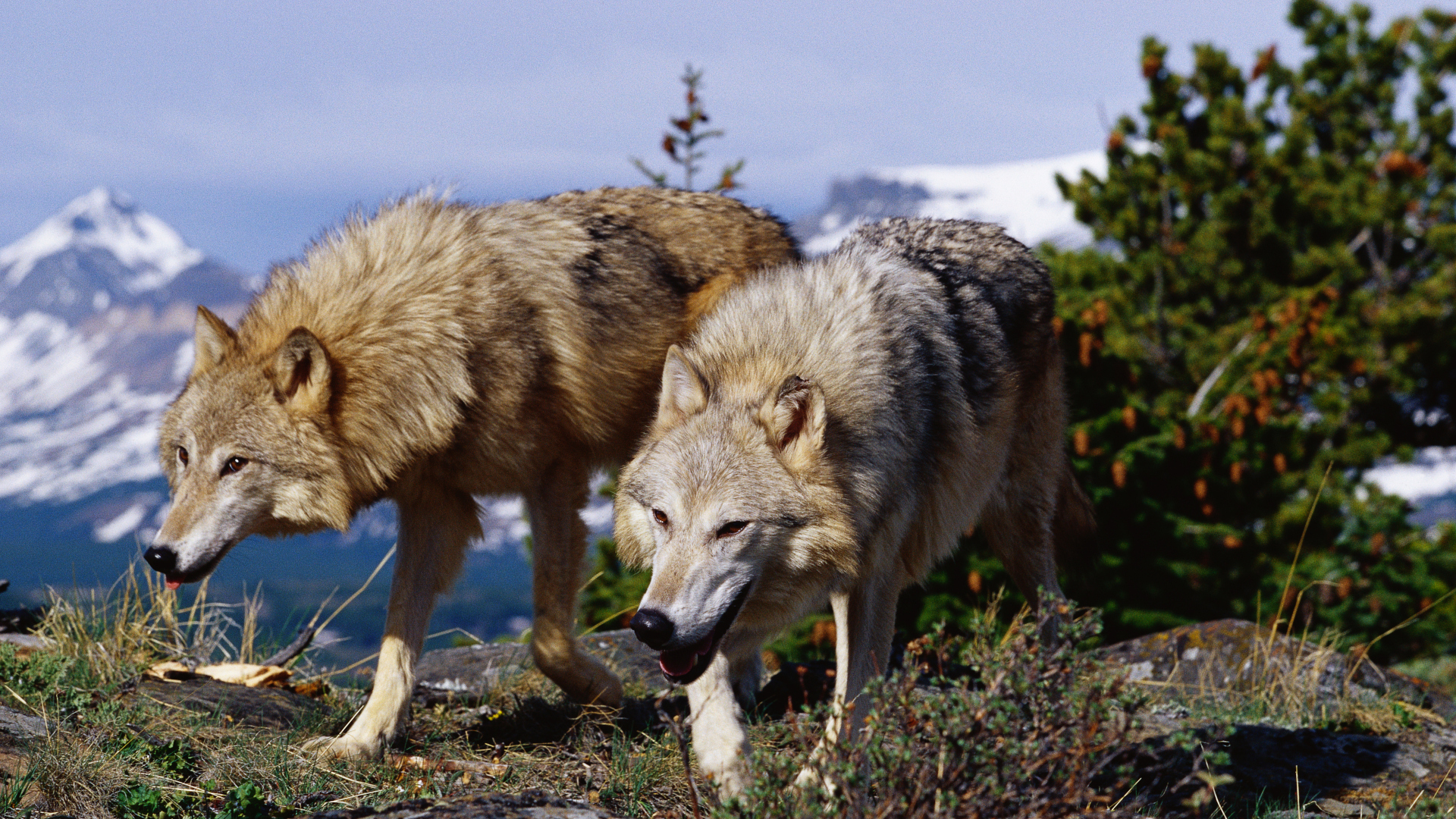
Again, this is an extremely unlikely occurrence, especially if you’re not doing something dangerous like feeding or cornering a wolf. However, a rabid wolf, one that has been habituated to human contact or an alpha female protecting her pups could display aggressive behavior. In this scenario, here’s what to do to protect yourself:
1. Fight back
If the wolf attacks you, stay on your feet and fight back. Use trekking poles, fishing poles, an ice axe, sticks, stones, whatever you can get your hands on. This will show the wolf you’re not worth attacking.
2. Use bear spray
If you have bear spray, it's worth carrying in wolf country as you can use it on a wolf. Learn more in our article on how to use bear spray.
3. Climb a tree
Wolves are dogs, not cats, and they can’t climb trees. Though you’re unlikely to have a lot of time, if you’re near a tree and can scale it, get to safety until the wolf retreats.
Julia Clarke is a staff writer for Advnture.com and the author of the book Restorative Yoga for Beginners. She loves to explore mountains on foot, bike, skis and belay and then recover on the the yoga mat. Julia graduated with a degree in journalism in 2004 and spent eight years working as a radio presenter in Kansas City, Vermont, Boston and New York City before discovering the joys of the Rocky Mountains. She then detoured west to Colorado and enjoyed 11 years teaching yoga in Vail before returning to her hometown of Glasgow, Scotland in 2020 to focus on family and writing.

